M6.7 solar flare erupts from Region 3559, producing S2 – Moderate solar radiation storm
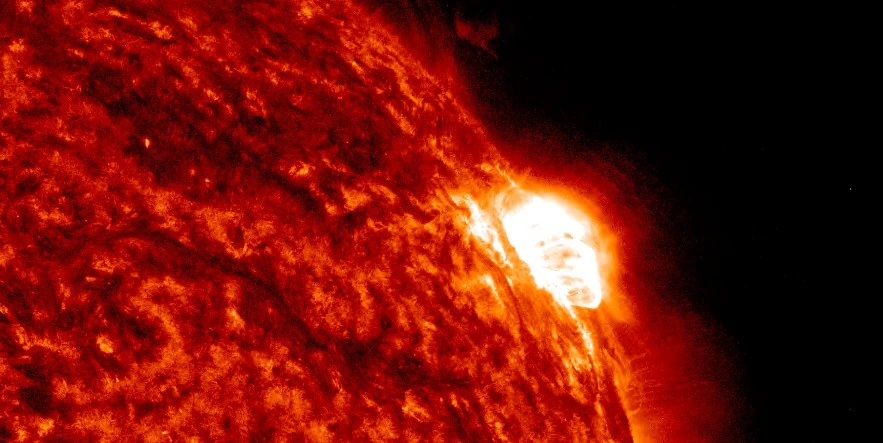
A moderately strong solar flare measuring M6.7 erupted from Active Region 3559 (beta-gamma) at 04:38 UTC on January 29, 2024. The event started at 03:54 and ended at 05:15 UTC.
A Type II Radio Emission with an estimated velocity of 512 km/s was associated with the event. Type II emissions occur in association with eruptions on the Sun and typically indicate a coronal mass ejection (CME) is associated with a flare event.
A 10cm Radio Burst (tenflare) with a peak flux of 2 700 sfu and lasting 36 minutes was also associated with the event. A 10cm radio burst indicates that the electromagnetic burst associated with a solar flare at the 10cm wavelength was double or greater than the initial 10cm radio background. This can be indicative of significant radio noise in association with a solar flare. This noise is generally short-lived but can cause interference for sensitive receivers including radar, GPS, and satellite communications.
Radio frequencies were forecast to be most degraded over Australia and far SE Asia.
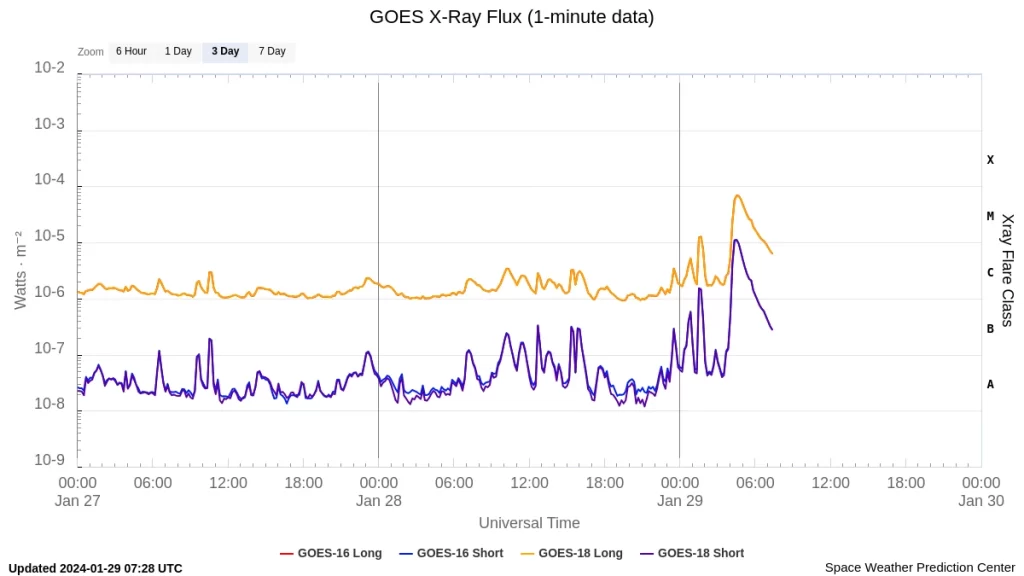
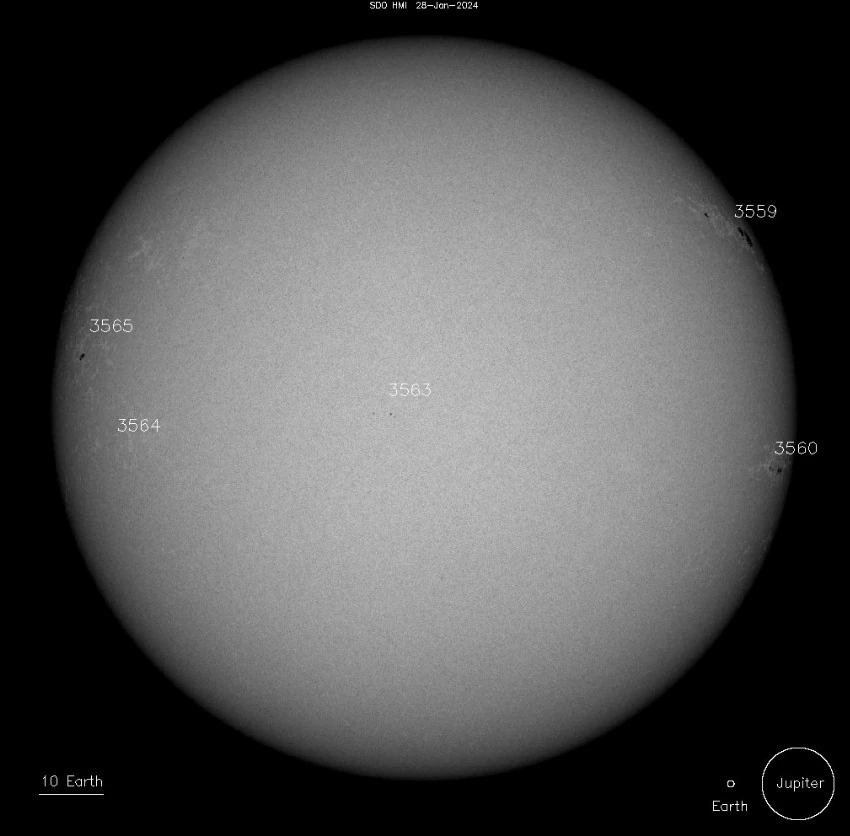
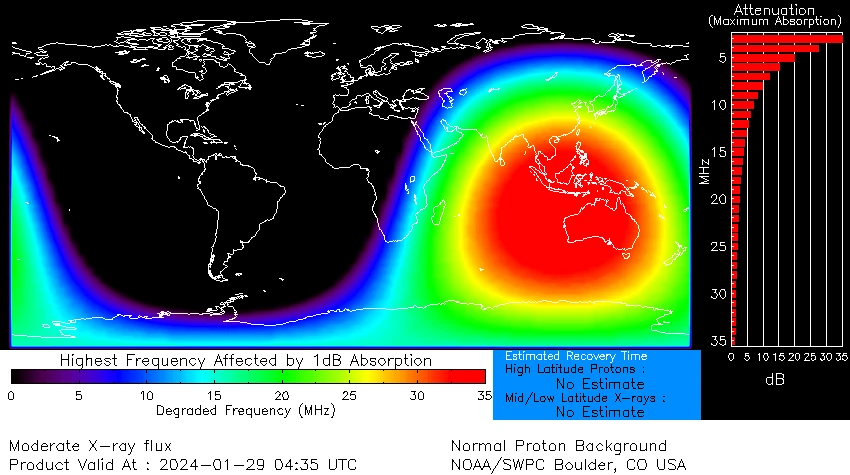
While the location of this region does not favor Earth-directed CMEs, an S1 – Minor solar radiation storm was associated with the flare event and an S1 solar radiation warning is in effect through 18:00 UTC today.
A solar radiation storm occurs when charged particles are accelerated by processes at or near the Sun and arrive in enough quantity at Earth. There are roughly 50 such events per solar cycle.
Under S1 conditions, no biological effects and impacts on satellite operations are expected but minor impacts on HF radio are expected in the polar regions. “The general public does not need to be concerned,” SWPC forecasters said.
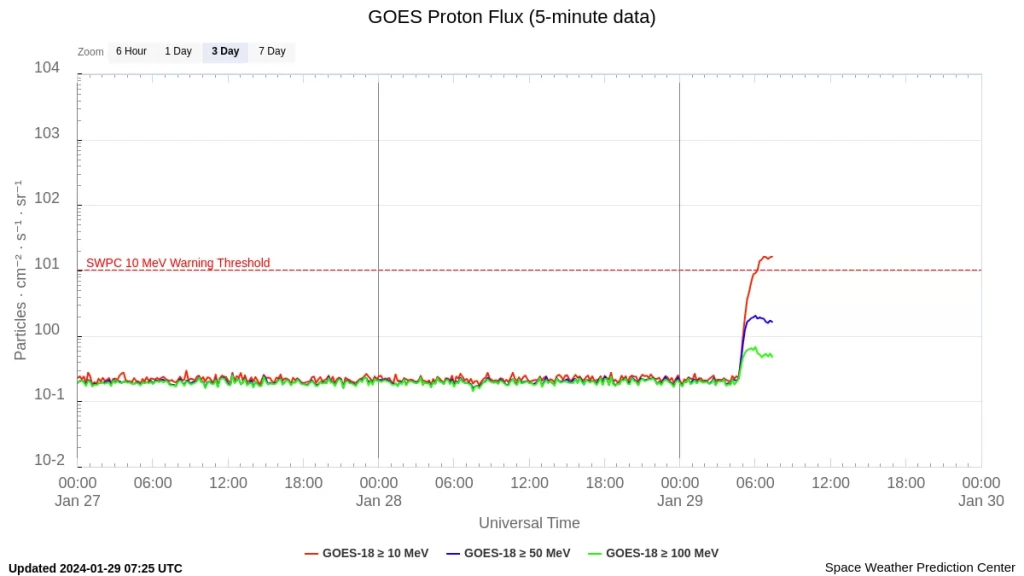
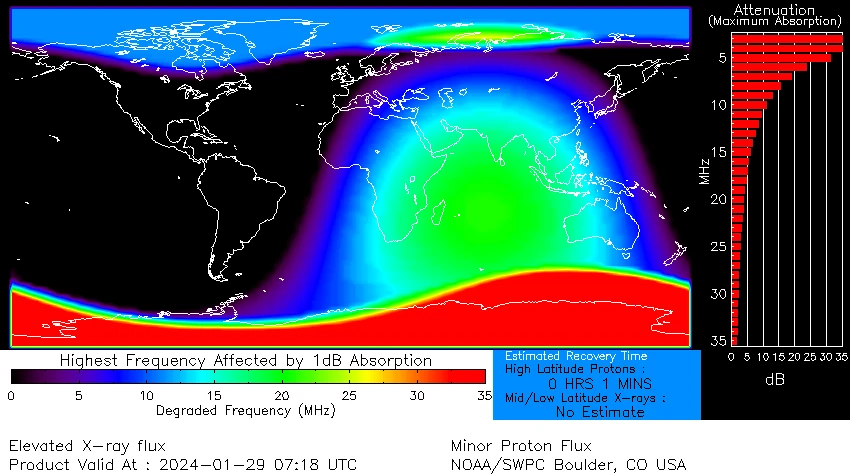
Update
The greater than 10 MeV protons reached the S2 – Moderate threshold at 17:40 UTC on January 29, peaking at 137 pfu (particle flux units). Meanwhile, the greater than 100 MeV protons peaked at a maximum of 0.67 pfu before declining back to background-like levels.
In addition to the proton flux, the greater than 2 MeV electron flux was observed at normal to moderate levels in 24 hours to 12:30 UTC on January 30, indicating a heightened state of space weather activity following the solar flare.
Featured image credit: NASA/SDO AIA 304, The Watchers

Commenting rules and guidelines
We value the thoughts and opinions of our readers and welcome healthy discussions on our website. In order to maintain a respectful and positive community, we ask that all commenters follow these rules.